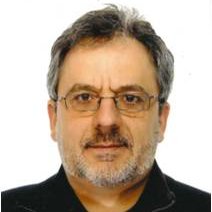28 Aug Developed Countries More At Risk of Harboring Polio Virus Excreters
 MedicalResearch.com Interview with:
MedicalResearch.com Interview with:
Dr Javier Martin PhD
Principal Scientist
Division of Virology
National Institute for Biological Standards and Control (NIBSC)
Medicines and Healthcare products Regulatory Agency (MHRA)
United Kingdom
Medical Research: What is the background for this study?
Dr. Martin: The global eradication of polio appears to be within reach. There has been no case of poliomyelitis caused by circulating wild type 2 poliovirus since 1999, no case of type 3 since November 2012 and the last case of type 1 in Africa was in August 2014, leaving some areas of Pakistan and Afghanistan as the main remaining reservoirs of circulating wild type 1 poliovirus. Poliovirus strains in the live-attenuated oral polio vaccine (OPV) are known to quickly revert to neurovirulent phenotype following replication in humans after immunisation. These vaccine-derived poliovirus (VDPV) strains can transmit from person to person in populations with low immunity potentially leading to poliomyelitis outbreaks.
Medical Research: What are the main findings?
Dr. Martin: Vaccine-derived poliovirus strains can replicate for very long periods of time in hypogammaglobulinaemic immunodeficient individuals. The case described in our paper represents by far the longest period of excretion described from such a patient and the only identified individual known to be excreting highly evolved VDPVs at present. As these viruses have lost the attenuation properties of the original vaccine strains, they could potentially cause poliomyelitis in susceptible people so it is very important to maintain high levels of vaccine coverage and surveillance activities. This is particularly important at this end stage of the global polio eradication initiative and will continue for some time after eradication as we want to minimise the risk of polio coming back. Results from our research will help designing optimal strategies for the polio eradication endgame which includes improved surveillance methods to quickly detect and characterize poliovirus from clinical and environmental samples and vaccination schemes and antiviral treatments to complete eradication and minimize the risk for a polio comeback.
Medical Research: What should clinicians and patients take away from your report?
Dr. Martin: There are two efficient vaccines against polio, OPV, referred above, and inactivated polio vaccine (IPV). These vaccines protect humans from paralytic poliomyelitis caused by all known poliovirus strains and variants. Immunodeficient individuals should be assessed and if necessary tested for poliovirus excretion. Treatment with immunoglobulin as usually prescribed to these patients will confer high levels of protection against paralytic disease. As patients such as the one described here will have less chance to survive in some developing countries with lack of medical treatment, middle income and developed countries are more at risk of harbouring chronic polio virus excreters. Indeed, several highly drifted VDPV strains have recently been isolated from sewage samples in Slovakia, Finland, Estonia and Israel indicating that an unknown number of these chronic excreters exist elsewhere. Populations with high vaccination coverage are protected against disease caused by these viruses as they are against any known poliovirus strains.
Medical Research: What recommendations do you have for future research as a result of this study?
Dr. Martin: Virus isolates from this individual should be further characterised to better understand the population dynamics of poliovirus evolution in immunodeficient individuals. This will help assessing the effectiveness of current anti-viral methods and methods in development to interrupt virus replication in these patients. Enhanced surveillance including sewage sampling should continue for as long as possible to search for the presence of VDPV strains such as those described in our paper. Eventually, new polio vaccines such as those based on non-infectious virus-like particles or even new genetically designed stable live-attenuated versions with no associated risk of producing VDPVs might be required to complete polio eradication. Scientists at NIBSC and other leading laboratories around the world are actively working on the development of such vaccine candidates.
Citation:
Glynis Dunn, Dimitra Klapsa, Thomas Wilton, Lindsay Stone, Philip D. Minor, Javier Martin. Twenty-Eight Years of Poliovirus Replication in an Immunodeficient Individual: Impact on the Global Polio Eradication Initiative. PLOS Pathogens, 2015; 11 (8): e1005114 DOI:10.1371/journal.ppat.1005114
[wysija_form id=”5″]
MedicalResearch.com is not a forum for the exchange of personal medical information, advice or the promotion of self-destructive behavior (e.g., eating disorders, suicide). While you may freely discuss your troubles, you should not look to the Website for information or advice on such topics. Instead, we recommend that you talk in person with a trusted medical professional.
The information on MedicalResearch.com is provided for educational purposes only, and is in no way intended to diagnose, cure, or treat any medical or other condition. Always seek the advice of your physician or other qualified health and ask your doctor any questions you may have regarding a medical condition. In addition to all other limitations and disclaimers in this agreement, service provider and its third party providers disclaim any liability or loss in connection with the content provided on this website.
MedicalResearch.com Interview with:, & Dr Javier Martin PhD (2015). Developed Countries More At Risk of Harboring Polio Virus Excreters
Last Updated on August 28, 2015 by Marie Benz MD FAAD
